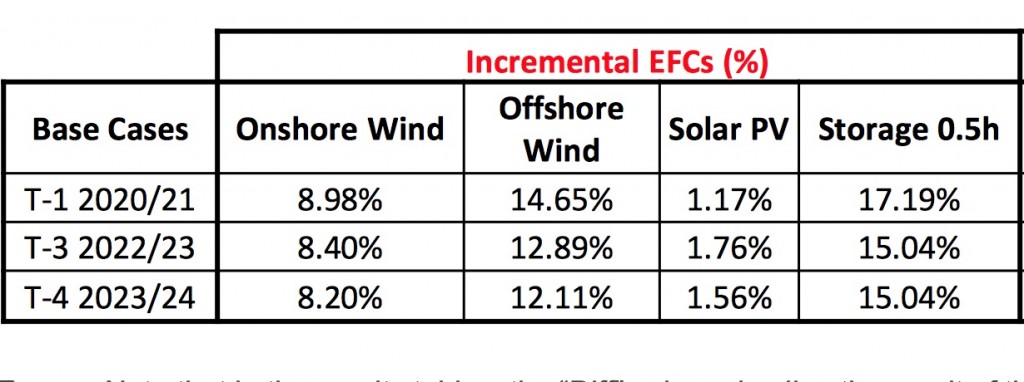The EMR Delivery Body (a National Grid function) has published for consultation potential derating factors for wind and solar power if it were allowed to participate in the Capacity Market. The assessment, described as ‘harsh’, would credit solar PV with little over 1% of ‘equivalent firm capacity’ (EFC), while onshore wind would be credited with less than 10%.
The assessment combined weather data with real performance data from solar, offshore wind and onshore wind (as opposed to manufacturers’ predictions), modelled along with interactions, for example with storage
In the CM, wind would have a lower EFC than it has in National Grid’s annual Winter Outlook (where it has an EFC of 15-20%). The Delivery Body said, “This is because wind becomes less valuable the more of it you have on the system. With 15 year contracts available in the CM, we need to properly reflect the incremental value of the next new project to the system”.
Solar PV added very little EFC to the system, and the Delivery Body said what it offered came mainly because it allowed batteries to remain charged later into the evening.
The EFC values differed depending on assumptions of the margin available, which was set at 3 hours ‘loss of load expectation’ as required by current government regulations. With tighter margins wind and solar PV “can make a better contribution to more and deeper stress events,” so their EFC would be higher. But limited-duration storage (ie batteries) makes less contribution when margins are tighter and its EFC in that situation decreased.
Among the consultation’s questions are whether the EFC should be assessed as ‘incremental’ (adding new projects to the existing portfolio, as above), across the fleet of PV, onshore or offshore wind, or as part of the entire fleet of technologies (which may interact). It also asks how trends change as renewables penetration increases in future, saying ‘combined’ EFC interactions “are small for now, but are complex, and may grow.”
The Delivery Body seeks feedback on its assessment by 31 January – stressing that its consultation covered only technical issues, and saying: “Any policy questions should be directed to BEIS and will be covered at a later policy consultation stage.”
Further reading
